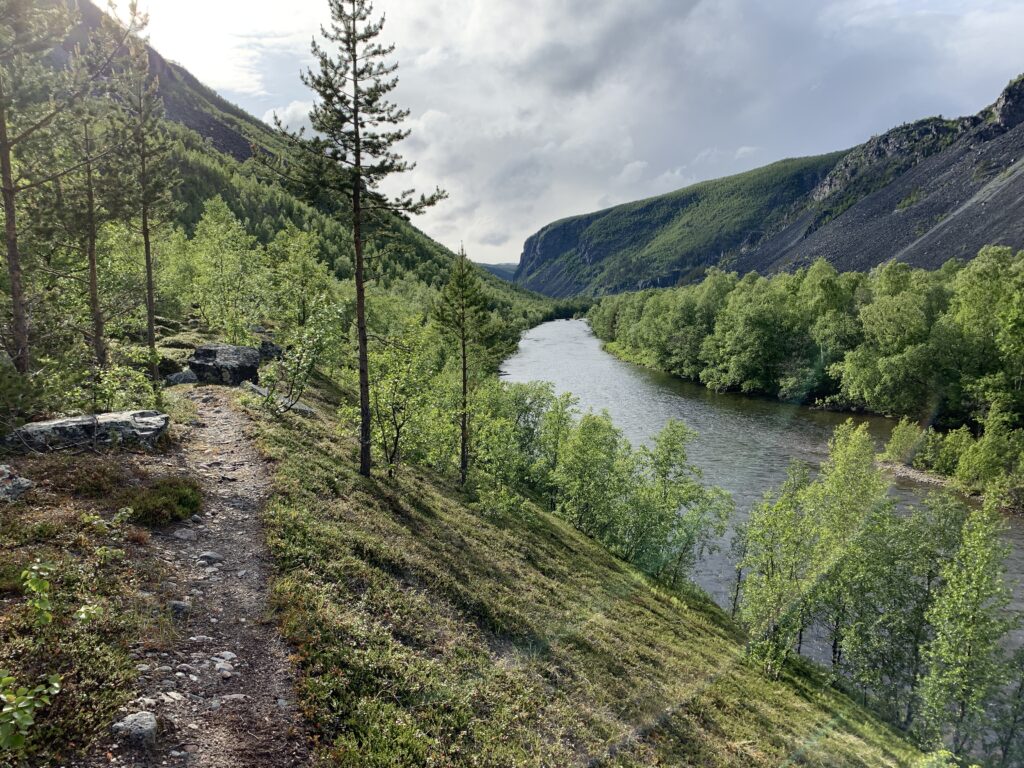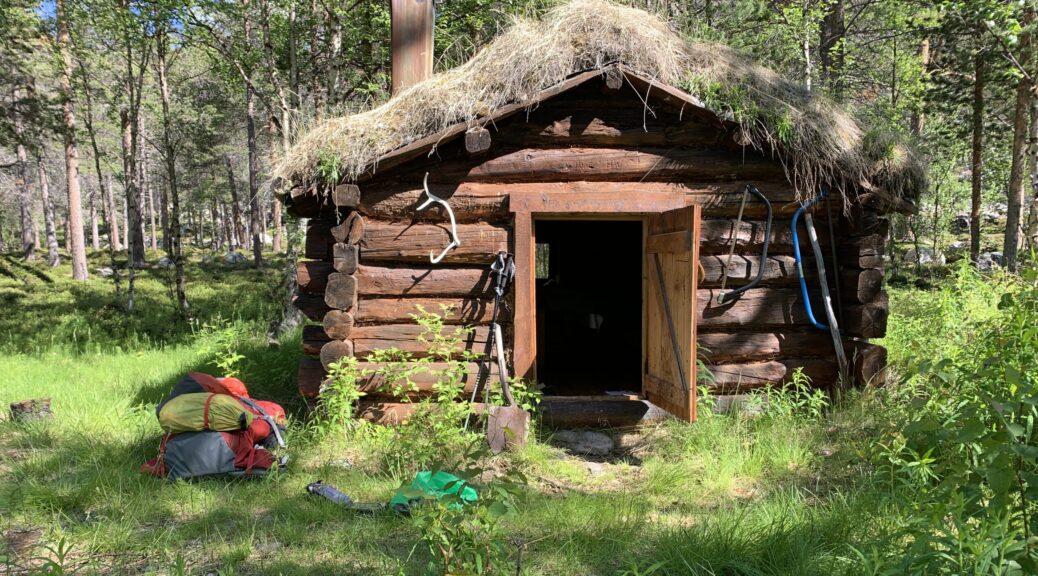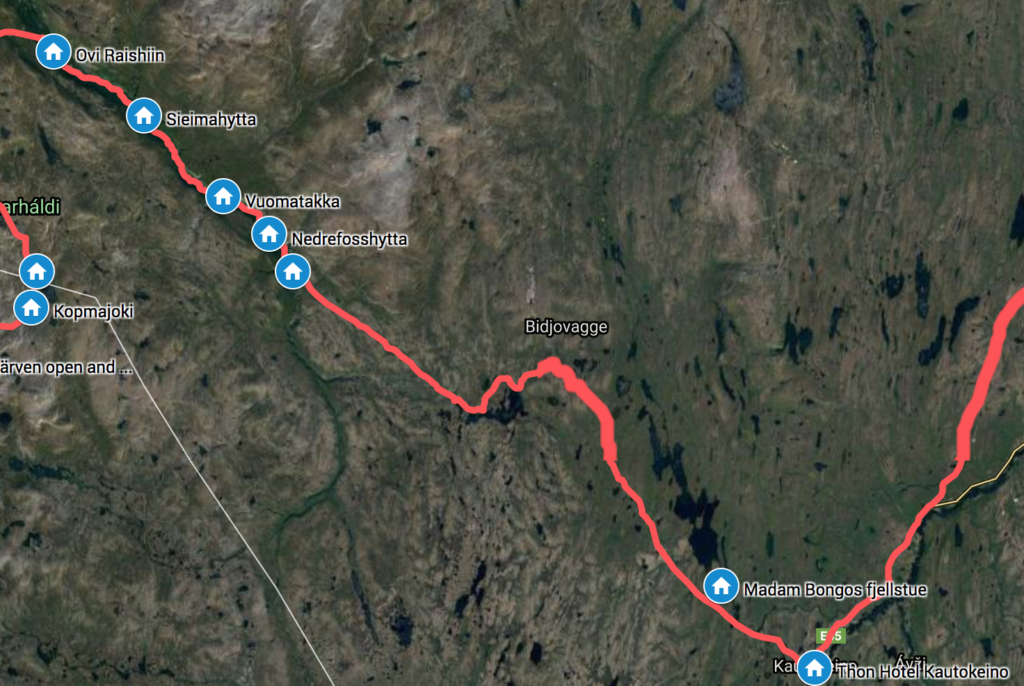The route: Kautokeino-Nedrefoss-Saraelv. June 27-July 1, 2019. Day 25-29. 93 km.
Kautokeino is the starting point of Nordkalottleden, and you start by making a choice: To either walk 15 km in knee- and thigh-deep mud until Madam Bongos Fjellstue, or tp walk on the paved road, parallel with and close to the muddy trail. The uneventful. road it was for me. Later, in Kilpisjärvi I met a German hiker, who desperately called her boyfriend in Germany as she found herself stuck here in thigh-deep mud. She had no idea there was a nice, paved road less than one kilometer away (potential lesson to learn: Look at the map).
The trail from Kautokeino down Reisadalen to Saraelv is one of the designated Historic Hiking Routes, with plenty cultural traces, such as hunting groves and murals dating back as far as the Stone Age. Parallel to the valley on the high plateau the reindeer have moved between Kautokeino and the summer pastures closer to the sea for centuries.
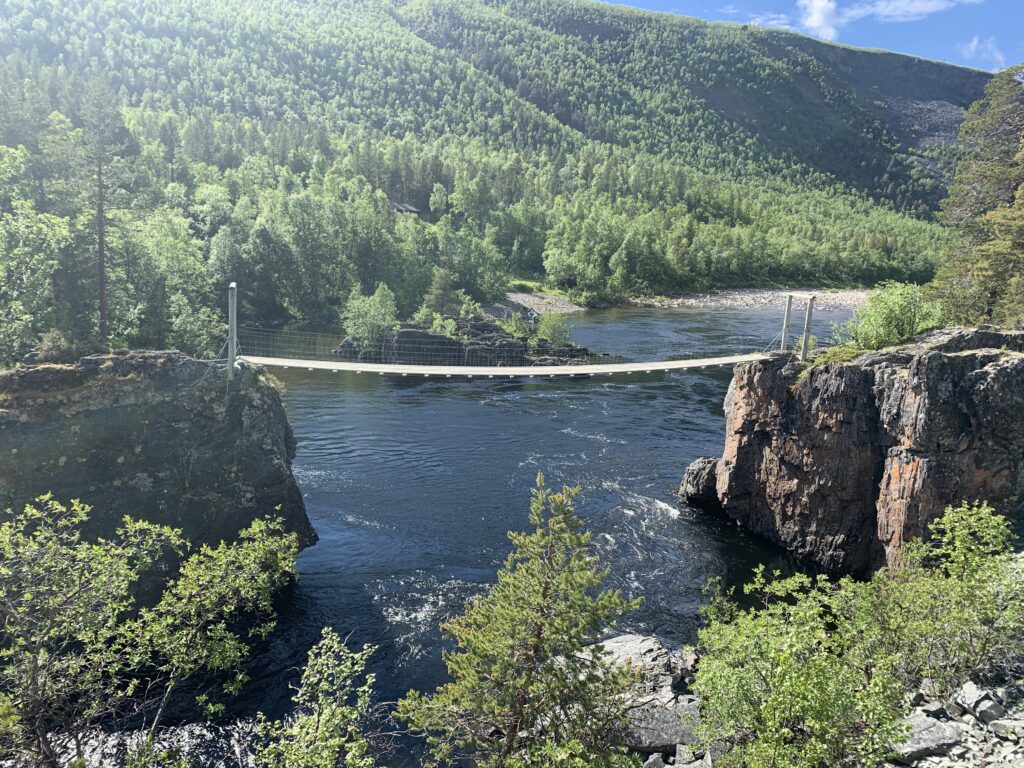
If it had not been so far north and swamped with mosquitos during the summer months, Reisadalen would be swamped with tourists. I was astonished to learn that the vast majority of Norwegians I met in the mountains further south had not even heard of Reisadalen. Never heard of Reisadalen, perhaps the most magnificent valley in the whole country? Unbelievable. Reisadalen is a magnificent canyon-type valley of the kind most do not associate with Norway. Lined with several spectacular waterfalls, most notably Imofossen and Mollisfossen, as well as fabulous open log cabins.
Once again, my arrival was well-timed: Almost 24 h sun, temperatures around zero and no mosquitos.
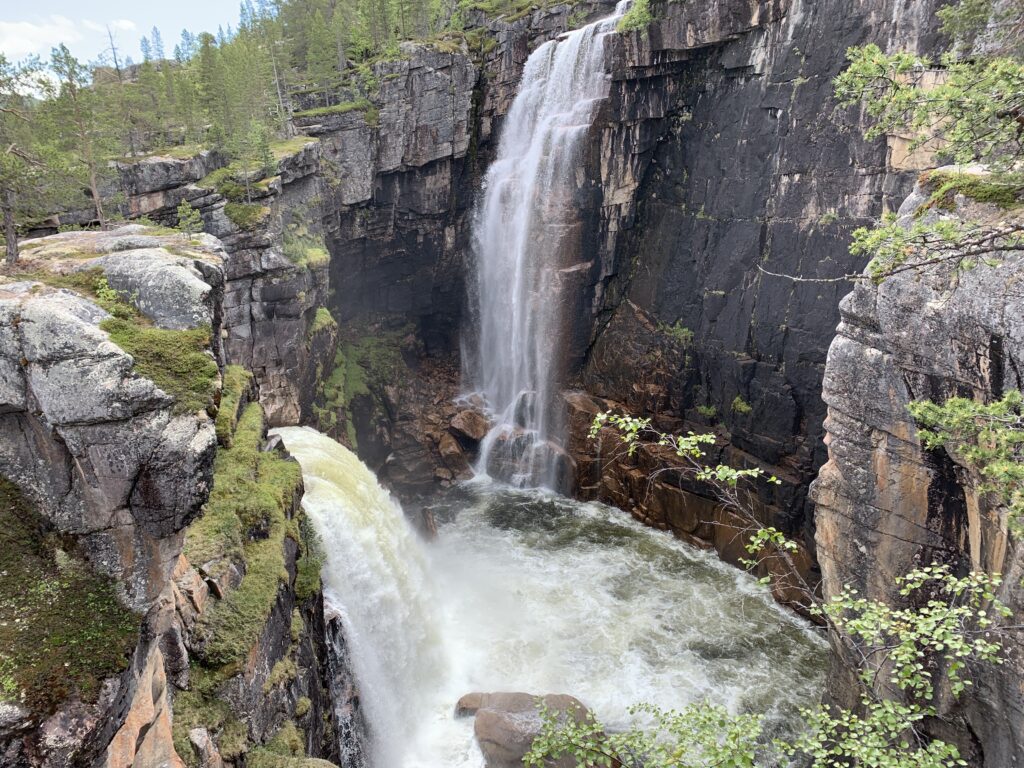
The greenhouse effect down in the valley results in a path often overgrown with meter high vegetation as well as being frequently eroded along the river bank. Nevertheless, from Imofossen it is perfectly possible to walk the 30 km down into Reisdalen until the Ovi Raishiin Visitor Point near Saraelv in one day.
However I spent three days, mainly due to a string of four wonderful open log cabins, complete with cooking equipment and firewood. I stayed at two of them, Imogammen and Vuomatakka, and it genuinely felt like staying in a museum. The cabins are free and maintained by Statskog. I passed several similar cabins further on such as Ole Nergårdbua (Dividalen) and Verdalen (Virvassdalen). Imagine free huts like that in populated areas such as Jotunheimen or Hardangervidda? They would get ruined in a week.
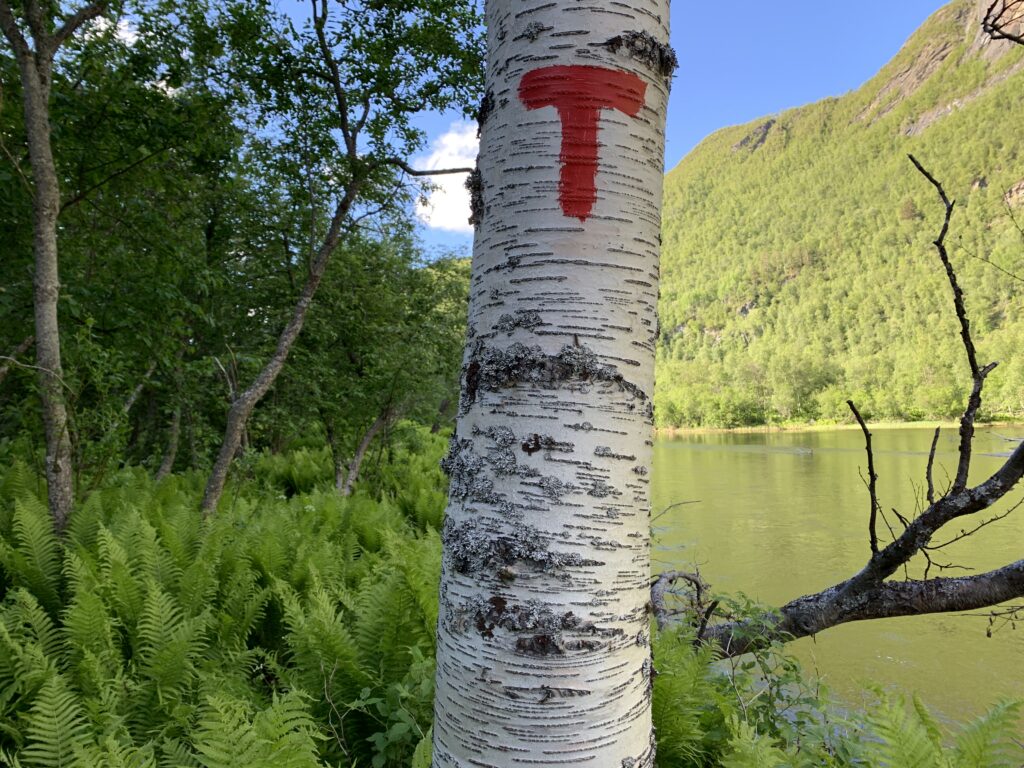
On the way down from Imofossen into the valley I passed ”The famous metal ladder”: I had heard many rumours about this 50 m vertical metal ladder ending right in the water with no way to go other than turn back onto the main trail. The rumours were right, there was indeed nowhere to go from the bottom of the ladder and I did not even dare to crawl down to look. But, instead of turning back, I decided to try and scramble down the rocky terrain in front of me, and suddenly 100 meters further on, the trail markers suddenly appeared. A couple of locals later told me, that this metal latter is NOT part of the trail, it is made for salmon fishers. The hiking trail, unfortunately unmarked at this point, passes to the right just before the metal ladder descends into the water.
Nedrefoss, with the only bridge as well as the DNT cabin, marks the transition from the upper to the lower part of the river, and from this point the river flows gently down all the way to the ocean.
Future dream trip # 2: Walk up to Jiertafossen (via Nedrefoss) from the parking and paddle down Reisaelva (probably from Nedrefoss) in my packraft. Find the log cabin Arturgammen, which I missed during this trip.
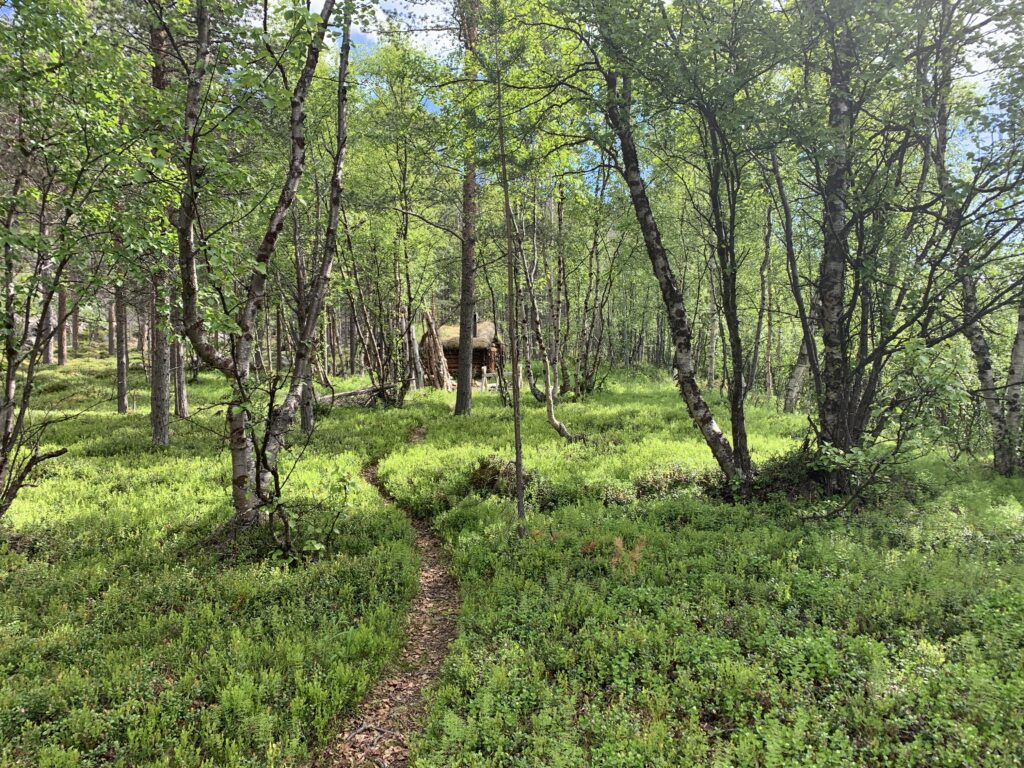
Walking down the floor of valley, I did not meet any hikers, but noticed quite a lot of traffic on the river: It turned out I arrived on the eve of the beginning of the salmon fishing season, and quite a few fishermen rode boats up the river to secure the best camp spots. The salmon travel all the way up to Imofossen and a total of 531 salmon (the biggest weighing 18,5 kg) were caught in Reisaelva in 2019, comparable to previous years, but a big decline compared to the situation 20 years ago. At Sieimma, a couple of salmon fishers sat around a fire. Very kindly, I was offered a boat ride the final 7 km down to Saraelv, something I obviously politely refused.
In the Vuomatakka cabin I learned Lesson # 8: Do not place your leather boots too close to the fire. Or at least that is my explanation for the fact that the inside of my right boot became deformed with a spike cutting right into my right big toe, impossible to remove, despite several hours of soaking the boot and cutting on the spike from the inside. From Vuomatakka it is 105 km to Kilpisjärvi, but getting out of Reisadalen and down to Storslett is a major hassle as well, so I decided to try to make it to Kilpisjärvi, where there is an almost daily bus to Tromsø.
